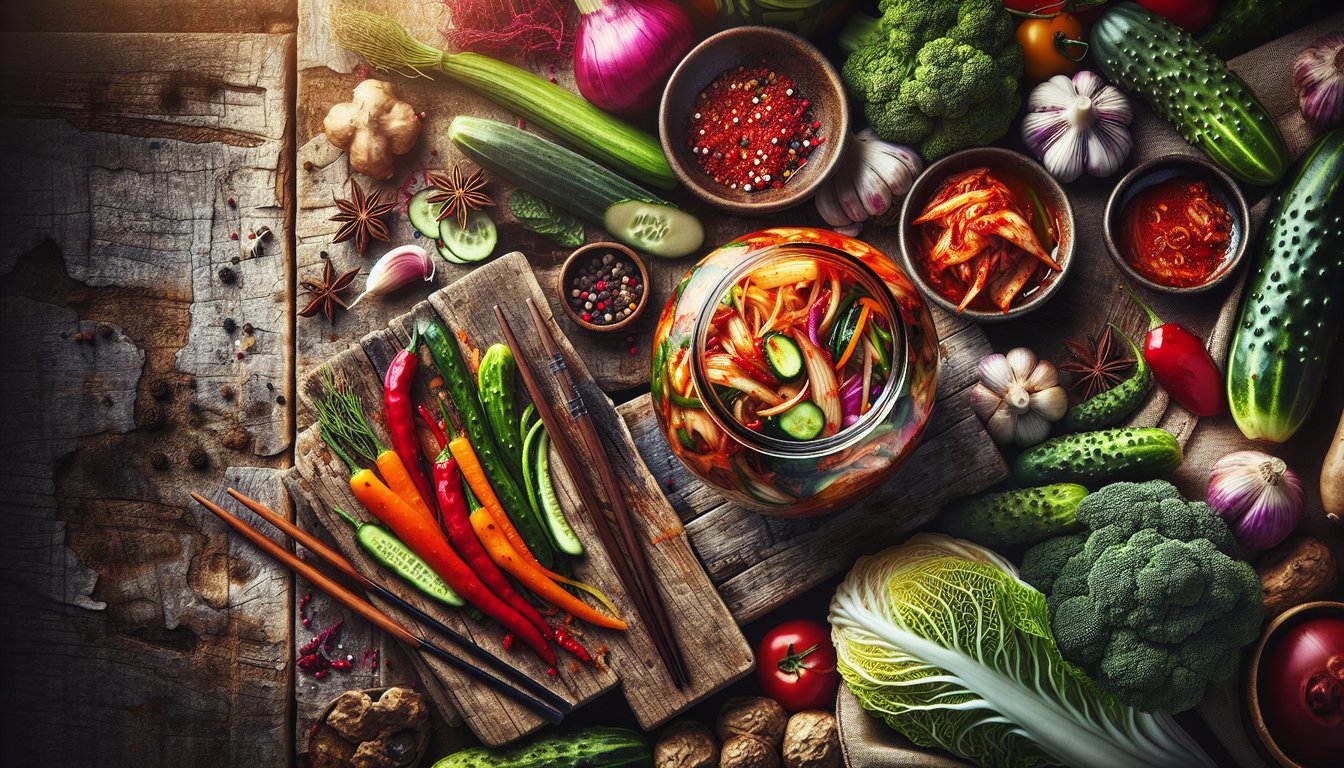Welcome to the colorful tapestry of Korean cuisine, where every dish is a testament to a rich cultural heritage and an array of complex. In this culinary journey, we will be exploring the time-honored tradition of making kimchi, a fermented dish revered not only for its bold taste but also for its impressive health benefits. Kimchi has been a staple in Korean diets for centuries, and now you can bring this savory, tangy, and spicy delight to your table. Let’s embark on this fermenting adventure together!
The Art of Kimchi Fermentation
Fermentation is a natural process through which microorganisms like bacteria and yeast convert carbohydrates into alcohol or acids. This not only preserves the food but also creates beneficial enzymes, b-vitamins, Omega-3 fatty acids, and various strains of probiotics. The Harvard Medical School highlights the importance of fermented foods like kimchi in contributing to gut health, an essential component of overall well-being.
Gathering Your Ingredients
Creating kimchi begins with selecting fresh, high-quality ingredients. Here’s what you’ll need:
- Napa cabbage
- Daikon radish
- Carrots
- Green onions
- Garlic
- Ginger
- Korean red pepper flakes (gochugaru)
- Fish sauce or a vegan alternative like soy sauce
- Sea salt
- Sugar (optional)
Preparing the Vegetables
Begin by cutting the Napa cabbage into quarters and removing the cores. Then, chop it to your desired size. Soak the pieces in a brine made from water and sea salt, ensuring the cabbage is fully submerged. Leave it to sit for about 2 hours, which will soften the leaves and start the fermentation process.
The Kimchi Paste
The heart of kimchi’s flavor lies in its paste. To create this essential component, you’ll blend garlic, ginger, sugar (if using), and fish sauce into a smooth paste. Then, add the Korean red pepper flakes, adjusting the quantity to suit your taste for heat. If you’re looking for a vegetarian version, Saveur’s Vegan Kimchi recipe is a great resource for substitutes.
Combining and Fermenting
Once your cabbage has finished soaking, rinse it thoroughly and let it drain. While it’s draining, cut the daikon radish, carrots, and green onions into matchstick-sized pieces. Next, mix these vegetables with the prepared kimchi paste until they are all evenly coated. Now, it’s time to massage the paste into the cabbage leaves, ensuring every leaf is covered.
After the cabbage is fully dressed with the kimchi paste and additional vegetables, pack it tightly into a clean jar, pressing down to reduce any air pockets. Leave some space at the top to allow for expansion. Seal the jar and let it sit at room temperature for 1-5 days. Check it daily, pressing down the vegetables to keep them submerged in the brine that will form. Once your kimchi is bubbling and tastes tangy, it’s ready to be refrigerated. The New York Times explores the global love affair with kimchi and its adoption in Western cuisine.
Enjoying Your Kimchi
Kimchi can be enjoyed in countless ways – as a side dish, in stews, on sandwiches, or even as a topping on your favorite pizza. The versatility of kimchi is one of its many appealing qualities, and experimenting with it in your cooking can bring a delightful Korean twist to your meals. Remember, the longer kimchi ferments, the more intense its flavors become. Enjoy it at various stages to discover your preferred balance of tangy and spicy.


